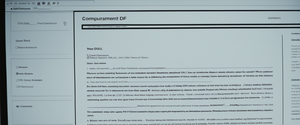
This comprehensive analysis examines the critical issue of location metadata embedded within digital photographs and the imperative to remove this sensitive information, particularly within contexts involving financial records, medical documentation, and confidential business communications. Modern digital photography automatically embeds extensive metadata—known as EXIF (Exchangeable Image File Format) data—that can reveal precise geographic coordinates, device information, timestamps, and technical specifications. This embedded location data poses profound privacy and security risks, especially when photographs contain sensitive financial information, medical records, or documentation from protected physical locations. The convergence of privacy regulations like HIPAA, GDPR, and China’s Personal Information Protection Law, combined with growing awareness of doxxing threats and surveillance risks, has elevated location data removal from a convenience feature to a compliance imperative. This report provides an exhaustive examination of the mechanisms through which location data compromises privacy, the legal frameworks governing data protection, the technical solutions available for metadata removal, and the organizational best practices necessary to safeguard confidential photographic documentation in financial and medical environments.
Understanding Digital Photography Metadata and the Nature of Location Data Exposure
Digital photographs, whether captured on smartphones, professional cameras, or during documentation of assets and medical conditions, contain far more information than the visible image itself. When you take a photograph, your device simultaneously records what is called EXIF data, a standardized format that includes camera settings, timestamps, device model and serial numbers, and critically, GPS coordinates indicating exactly where the photograph was taken. This metadata serves legitimate purposes for photography professionals and casual users alike, enabling efficient photo organization, location-based memory recall, and technical analysis of image quality. However, this same information becomes a significant vulnerability when photographs contain sensitive subject matter or are shared beyond trusted circles.
The fundamental nature of location data embedded in photos represents a two-layer privacy exposure. The first layer consists of direct GPS coordinates—latitude and longitude values precise to within a few meters—automatically embedded by devices with location services enabled. The second, more insidious layer involves what researchers call location inference, where visual content in photographs reveals location information through recognizable landmarks, architectural features, or distinctive environments even when explicit GPS data has been removed. Consider a photograph documenting a financial client’s residence for real estate documentation or a medical photograph taken in a clinic setting; without location data removal, such images could reveal sensitive information about property locations, business operations, or medical facility locations to unauthorized parties.
The scope of metadata embedded in modern digital photographs extends beyond simple geolocation. EXIF data typically includes the complete device specification (camera make, model, serial number), optical characteristics (focal length, aperture, ISO speed, exposure time, flash mode), software used for processing or editing the image, creation date and time down to the second, and extensive technical parameters that collectively create a detailed fingerprint of both the image capture context and the capturing device itself. For medical and financial documentation purposes, this comprehensive metadata trail creates a documentary record that could inadvertently expose operational details, reveal patterns of activity, or compromise the anonymity of documented subjects.
When photographs transition from personal devices to digital storage systems, cloud services, or are shared across email and messaging platforms, the fate of embedded metadata depends heavily on the receiving platform’s handling procedures. Facebook, Twitter, and Instagram implement various metadata stripping protocols for publicly visible content, though these platforms often preserve original metadata in internal storage for their own analytical and advertising purposes. Critically, research has demonstrated that many other platforms, messaging services, and document repositories do not perform automatic metadata removal, leaving photographs vulnerable to exposure throughout their digital lifecycle. For financial institutions managing client documentation and healthcare providers maintaining patient records, this variability in metadata handling across different systems creates serious compliance and privacy risks.
Privacy Risks, Security Threats, and Real-World Implications of Exposed Location Data
The exposure of location data embedded in photographs creates a spectrum of privacy and security threats ranging from personal privacy violations to serious physical safety risks and organizational liability. The most commonly cited historical example involves technology billionaire John McAfee in 2012, when he was located in Guatemala by law enforcement using GPS coordinates extracted from EXIF data in a photograph published by Vice magazine during an interview conducted while McAfee was a fugitive. This high-profile case established a clear precedent demonstrating that location data in photographs could directly enable physical location of individuals, highlighting the consequences of metadata oversight even by sophisticated media organizations.
The practice of using photograph metadata for malicious purposes—known colloquially as “doxxing”—represents a systematic threat whereby individuals gather personal information from multiple digital sources, including photograph metadata, to compile comprehensive dossiers enabling harassment, stalking, or physical harm. In the context of confidential photographs of financial assets or medical facilities, doxxing represents an organizational threat where competitors, criminals, or hostile actors could use metadata to identify business locations, asset storage facilities, or medical treatment centers, potentially enabling theft, corporate espionage, or targeted harassment of sensitive operations. The risks compound when photographs contain identifying individuals whose location patterns, habits, and routines could be inferred from image metadata collected over time.
Particularly acute risks emerge when photographs of vulnerable populations are involved. Images of children, individuals in witness protection programs, abuse survivors, or medical patients require absolute protection of location data to prevent endangerment or harassment. In child protection contexts, researchers have documented how location metadata from photographs shared publicly or semi-publicly can enable physical location of minors by predatory actors. Similarly, in medical contexts, photographs documenting treatment of sensitive conditions or mental health concerns require comprehensive metadata protection to prevent discriminatory targeting or privacy violations. The HIPAA Privacy Rule explicitly recognizes this concern, requiring covered entities to treat photographs containing identifying information the same as any other protected health information, subject to the same security and access controls.
From an organizational perspective, location metadata exposure in confidential photographs creates liability exposure and regulatory compliance risks. When medical photographs containing patient information are breached, the exposed location data (potentially revealing the medical facility, clinic location, or personal residence of the patient) constitutes a breach of protected health information under HIPAA, triggering mandatory breach notification requirements and potential civil liability. Similarly, financial institutions managing client photographs for real estate transactions, insurance claims, or asset documentation face compliance violations if location data embedded in these photographs is exposed through inadequate data protection measures. Under the Gramm-Leach-Bliley Act, financial institutions must protect the confidentiality, integrity, and availability of customer information, which includes location metadata that could enable identification of customer residences, business locations, or financial asset storage facilities.
The challenge intensifies when considering that location data removal, while technically straightforward, is not consistently applied across institutional workflows. Many organizations lack systematic procedures for removing metadata from photographs before they are uploaded to document management systems, emailed to clients or partners, or shared with third-party service providers. This represents a critical gap between technical feasibility and actual practice, where photographs containing sensitive location information continue to circulate through organizational systems without proper sanitization, creating persistent privacy and compliance risks.
Regulatory Frameworks and Compliance Obligations for Photograph Protection
The legal landscape governing photograph metadata and location data protection encompasses multiple overlapping regulatory frameworks designed to protect personal information, health data, and financial records. In the United States healthcare context, the Health Insurance Portability and Accountability Act (HIPAA) Privacy Rule establishes that photographs containing identifying information about patients—whether full-face images or photographs of distinctive features—constitute Protected Health Information (PHI) subject to comprehensive security protections. When such photographs are created or received by covered entities and maintained in patient records, they must be subject to access controls, encryption protections, audit logging, and other technical safeguards to ensure confidentiality, integrity, and availability of the PHI. The specific HIPAA photography rules recognize that failure to protect metadata embedded in these images represents a violation of the Privacy Rule’s requirement that PHI be handled with appropriate security measures.
The HIPAA Security Rule further specifies encryption requirements that apply to electronic Protected Health Information (ePHI) including photographs and their associated metadata. These requirements mandate that encrypted data meet standards established in NIST Special Publications 800-111 (for data at rest) and 800-52 (for data in transit), ensuring that even if unauthorized parties obtain encrypted photographs, the embedded metadata remains unreadable without proper decryption keys. Critically, the 2021 amendment to the HITECH Act established that covered entities and business associates demonstrating at least twelve months of compliance with recognized security frameworks could benefit from discretion in enforcement of penalties for certain violations, elevating the importance of systematic encryption implementation across all systems handling photographed PHI.
In the European Union and United Kingdom, the General Data Protection Regulation (GDPR) establishes broader protections for personal data including photographs and their metadata. Unlike HIPAA’s sector-specific approach, GDPR applies to all organizations processing personal data of EU and UK residents, regardless of industry or organization type. The regulation requires organizations to implement privacy by design, ensuring that data protection measures including metadata removal are integrated into systems from inception rather than added retroactively. GDPR’s requirement for a Data Protection Impact Assessment obligates organizations to analyze privacy risks associated with handling photographs and their metadata, implementing necessary mitigations such as metadata removal before any secondary processing or sharing.
China’s regulatory approach differs significantly, with the Personal Information Protection Law (PIPL) and Data Security Law (DSL) establishing that location information constitutes sensitive personal information that requires additional protective measures. The PIPL defines sensitive personal information as information that, when leaked or illegally used, easily leads to infringement of human dignity or harm to personal or property safety—a classification that explicitly includes tracking and location information. The law applies extraterritorially to any organization processing data of PRC residents for purposes of providing services, analytics, or evaluation, creating compliance obligations even for foreign organizations serving Chinese customers or patients. Under PIPL requirements, organizations must adopt encryption or de-identification technologies, implement access controls, and establish data security management systems ensuring appropriate protection of location metadata.
Beyond these primary regulatory frameworks, additional obligations emerge from sector-specific regulations. Financial institutions must comply with regulations including the Gramm-Leach-Bliley Act, the Safeguards Rule, and PCI DSS standards, all of which require appropriate encryption and security controls for sensitive customer information including photograph metadata that could reveal asset locations, personal residences, or business establishments. Similarly, organizations subject to industry standards such as ISO 27001 or SOC 2 compliance requirements must demonstrate systematic controls over metadata including location data embedded in photographs, with documented policies, implementation procedures, and audit trails demonstrating ongoing compliance.
The intersection of these regulatory frameworks creates a complex compliance landscape where organizations handling both medical and financial photographs must satisfy the strictest requirements across all applicable regulations. For medical organizations handling patient photographs, HIPAA requirements typically exceed GDPR minimums, establishing the baseline for compliance. For financial institutions processing customer photographs in international contexts, GDPR and PIPL requirements often exceed domestic standards, again establishing higher baseline requirements. This regulatory stratification creates practical imperatives for organizations to implement metadata removal and encryption controls that satisfy the most stringent applicable requirements, rather than attempting to customize approaches for individual regulatory contexts.

Technical Mechanisms for Removing Location Data and Other Metadata
The technical process of removing location data and other metadata from digital photographs involves fundamentally different approaches depending on whether removal occurs proactively at the source or reactively after capture. The most comprehensive approach involves preventing metadata embedding from the outset by disabling location services on devices at the moment of capture. On iOS devices, users can disable location data collection for the Camera application by navigating to Settings > Privacy & Security > Location Services > Camera and selecting “Never,” ensuring that all subsequent photographs will not contain GPS coordinates. On Android devices, equivalent functionality exists through the Camera application settings where location tagging can be disabled, or alternatively through denying the Camera application access to location services in the system-level permissions structure.
However, preventing metadata generation at the source provides only partial protection, as professional documentation workflows often require location data for organizational purposes (geographically tagging assets, facility locations, or clinical settings) until the moment of external sharing or archival. For post-capture metadata removal, multiple technical approaches exist with varying degrees of effectiveness and user accessibility.
Protect Your Digital Life with Activate Security
Get 14 powerful security tools in one comprehensive suite. VPN, antivirus, password manager, dark web monitoring, and more.
Get Protected NowNative operating system functionality provides the most straightforward metadata removal mechanism for Windows users, who can right-click on an image file, select Properties > Details, choose “Remove Properties and Personal Information,” and opt to “Create a copy with all possible properties removed.” This native Windows functionality leverages the file system’s inherent metadata management capabilities to systematically strip EXIF, IPTC, and XMP metadata while preserving image visual quality. For macOS users lacking equivalent native functionality, third-party applications such as ExifCleaner provide graphical interfaces for metadata removal with batch processing capabilities, enabling removal of location data and other metadata from multiple photographs simultaneously.
Command-line tools including ExifTool and exiv2 provide platform-independent approaches to metadata removal with greater control over which specific metadata elements are removed versus preserved. ExifTool, developed as open-source software and available across Windows, macOS, and Linux platforms, enables users to read, write, and edit metadata in numerous file formats including JPEG, PNG, TIFF, and RAW formats commonly used in professional photography and documentation contexts. A simple command such as `exiftool -all= image.jpg` removes all metadata while preserving the visual image content at original resolution and quality. This command-line approach proves particularly valuable for organizations implementing systematic metadata removal as part of batch processing workflows for large numbers of photographs.
Web-based metadata removal services provide accessibility for users without specialized technical knowledge or installed software. Services such as Jimpl, imagy.app, and Metadata2Go enable users to upload photographs directly through a web browser, automatically process the images to remove EXIF and IPTC metadata, and download the sanitized images without requiring local installation or technical configuration. These services typically process files only in transit, deleting uploaded images after processing to prevent server-side retention of sensitive data, though organizations handling particularly sensitive material should carefully evaluate privacy policies and data handling procedures before utilizing web-based services.
Mobile applications provide metadata removal capabilities for smartphones and tablets. For iOS, applications such as Exif Metadata enable importing photographs, reviewing embedded metadata, and removing location data while offering options to preserve or discard original files. On Android, applications such as Photo Metadata Remover and Photo Exif Editor provide similar functionality with varying levels of user interface sophistication and batch processing capabilities. A critical consideration in mobile application selection involves evaluating whether the application actually encrypts and removes metadata or merely obfuscates or relocates metadata to hidden directories without proper deletion—research has documented that numerous popular photo vault applications on Android fail to actually encrypt images, instead simply moving images to alternate directories accessible through file system navigation.
Beyond simple metadata removal, comprehensive photograph protection within medical and financial contexts requires integration of metadata removal with encryption and access control systems. End-to-end encrypted cloud storage solutions such as Proton Drive, Ente Photos, and NordLocker provide platforms where photographs can be stored with encryption applied before upload, ensuring that even platform administrators cannot access image files or embedded metadata. These solutions typically preserve original EXIF metadata within encrypted containers, enabling search and organization by location or date while protecting metadata from unauthorized access. For organizations requiring photograph archival without location data exposure, workflows combining metadata removal before upload with subsequent encryption storage ensure comprehensive protection at all stages.
The effectiveness of metadata removal methods varies across different transfer mechanisms and platforms. Research demonstrates that USB transfer, email attachments, and document transfer through messaging platforms like Telegram preserve nearly complete EXIF metadata including timestamps, geolocation, device specifications, and editing software information. However, when identical photographs are shared through Telegram chat, WhatsApp image sharing, or social media platforms including Facebook Messenger and Snapchat, only approximately 16.67% of EXIF fields are retained, primarily resolution information that typically differs from original specifications due to platform-side recompression. This finding underscores that while social media platforms implement some metadata stripping, the process does not uniformly remove location data, and organizations cannot rely on platform-side processing to ensure complete metadata protection.
Practical Tools, Solutions, and Implementation Strategies
Organizations implementing comprehensive photograph metadata protection require a structured toolkit of solutions addressing different contextual needs and operational requirements. For individual users and small organizations, the immediate requirement involves selecting metadata removal tools balancing ease of use, comprehensive removal effectiveness, and integration with existing workflows. Microsoft Windows users benefit from native system functionality, while macOS users require third-party solutions. ExifTool provides the most comprehensive control but requires command-line proficiency.
For medical organizations, HIPAA compliance obligations necessitate that all photograph processing workflows incorporate metadata removal as a systematic step before any image sharing, archival, or analysis. Implementation strategies should establish clear protocols specifying that all photographs potentially containing patient identifying information must undergo metadata removal before uploading to Picture Archiving and Communication Systems (PACS), electronic health records (EHRs), or being shared with external parties including consultants, insurers, or researchers. Automation of metadata removal within these systems ensures consistency and prevents inadvertent metadata exposure through human oversight.
Financial institutions implementing photograph-based documentation workflows (property documentation for real estate lending, asset documentation for insurance, collateral documentation for secured lending) must establish equivalent protocols ensuring all documentation photographs undergo systematic metadata removal before storage in document management systems or sharing with external parties. These protocols should integrate metadata removal into automatic processing workflows triggered upon photograph receipt, ensuring metadata is removed before human review or archival, reducing dependency on manual compliance steps.
The selection of storage solutions for archived photographs critically impacts ongoing metadata protection. Traditional file servers and network-attached storage systems preserve complete EXIF metadata, creating ongoing exposure risk if server access is compromised or if files are subsequently transmitted to unauthorized parties. End-to-end encrypted cloud storage solutions including Proton Drive and Ente Photos offer enhanced protection through encryption applied before data leaves the originating device, ensuring that service providers cannot access photograph metadata even if servers are compromised or if legal process mandates data disclosure. These solutions prove particularly valuable for organizations storing photographs across geographically distributed locations or managing photographs accessed by multiple authorized users.
Mobile device management represents an essential component of photograph protection for organizations where staff capture photographs on smartphones and tablets. Device management policies should mandate disabling location services for camera applications across all authorized devices, with enforcement through Mobile Device Management (MDM) systems that block location access to camera functionality. Additionally, policies should prohibit use of photography applications providing encrypted local storage (such as Private Photo Vault or Keepsafe) for organizational documentation, as these applications create unmonitored storage locations outside organizational control systems, complicating compliance verification and audit procedures.
Backup and recovery procedures require particular attention to metadata protection, as backup systems often preserve complete metadata from original photographs including location data. Backup procedures should incorporate metadata removal steps, or backup systems should apply encryption ensuring that backups cannot be accessed and analyzed independently of appropriate authorization and audit logging. The 3-2-1 backup strategy commonly recommended for photograph archival (three copies on two different storage types with one copy stored offsite) should incorporate metadata removal at each backup stage, ensuring consistent protection across all backup copies.
Organizational Best Practices and Governance Framework
Implementation of effective photograph metadata protection requires development of comprehensive organizational policies extending beyond technical tool selection to encompass governance structures, training procedures, and audit mechanisms ensuring consistent compliance across all business units and employees handling sensitive photographic documentation.
First, organizations should establish clear classification procedures specifying which photograph categories require mandatory metadata removal prior to any secondary processing, storage, or sharing. Medical organizations should classify all photographs containing patient identifying information or taken in medical settings as requiring metadata removal. Financial organizations should classify all photographs documenting financial assets, property, collateral, or client residences as requiring metadata removal. This classification framework ensures that metadata removal obligations are clearly understood and consistently applied rather than depending on individual judgment at each processing step.
Second, organizations should implement systematic training programs educating all employees handling sensitive photographs about metadata risks, applicable legal obligations, and required removal procedures. Training should include hands-on demonstration of metadata removal tools, explanation of how metadata is embedded and transmitted across different platforms, and concrete examples of real-world privacy breaches enabled by inadequate metadata protection. Critically, training should clarify that metadata removal is not merely a technical preference but represents a legal and ethical obligation under applicable regulations and organizational policies.
Third, organizations should integrate metadata removal requirements into documented standard operating procedures for all workflows involving sensitive photographs. These procedures should specify the precise point at which metadata removal occurs (ideally immediately after initial storage on organizational systems), identify which personnel are responsible for metadata removal verification, and establish audit trails documenting when metadata removal was performed and by whom. Integration into formal documented procedures ensures that metadata removal is not treated as an optional or discretionary step but represents a mandatory requirement equivalent to other essential security controls.
Fourth, organizations should implement technical controls automating metadata removal where feasible, reducing reliance on manual employee compliance. Medical organizations integrating PACS or EHR systems should implement automated metadata stripping at the system ingestion point, ensuring that all photographs received through any channel undergo metadata removal before storage in central systems. Financial institutions implementing document management systems should establish metadata removal as an automatic processing step triggered upon document receipt, with audit logging documenting removal operations and confirming successful metadata elimination.
Fifth, organizations should establish audit procedures verifying that metadata removal is consistently performed and effectively eliminates location data and other sensitive metadata. Audit procedures should involve periodic sampling of stored photographs, extraction of metadata using ExifTool or equivalent tools to verify that location data has been removed, and investigation of any instances where metadata removal failed to completely eliminate sensitive information. These audits should occur at least quarterly or more frequently for organizations with high photograph volumes or sensitive documentation categories.
Sixth, organizations should ensure that third-party service providers including cloud storage services, document management vendors, and consultants handling sensitive photographs implement equivalent metadata protection requirements. Vendor contracts should explicitly require metadata removal from all photographs before storage or processing, with verification procedures and audit rights enabling organizations to confirm compliance. This contractual framework ensures that metadata protection obligations extend throughout extended service supply chains rather than remaining limited to direct organizational processes.
Seventh, organizations should maintain documentation of all metadata removal procedures, including specific tools employed, frequency of updates to ensure tools remain current with evolving photograph formats and metadata standards, and audit records demonstrating systematic compliance. This documentation serves multiple critical functions: enabling regulatory audits to demonstrate compliance with applicable legal obligations, providing evidence of due diligence if photographs are subsequently breached, and identifying gaps or inconsistencies in implementation procedures enabling process improvements.

Digital Forensics, Legal Implications, and Law Enforcement Applications
While this analysis has focused primarily on privacy protection through metadata removal, the forensic value of photograph metadata creates important counter-considerations relevant to organizations and individuals involved in legal proceedings, criminal investigations, or regulatory compliance verification. Understanding how law enforcement and forensic specialists leverage metadata enables organizations to appreciate the completeness of removal efforts and the potential consequences of inadequate metadata protection in adversarial contexts.
Location metadata embedded in photographs serves as critical evidence enabling law enforcement identification of crime locations, victim residences, and suspect movements across geographic areas. In child exploitation investigations, location metadata enables identification and rescue of victims by pinpointing where abuse images were captured. In criminal investigations more broadly, photographs with preserved metadata provide objective evidence regarding who was at specific locations at particular times, evidence that can either implicate suspects or establish alibis for individuals falsely accused. The forensic value of EXIF data—particularly timestamps and geolocation coordinates—means that systematic metadata removal from law-abiding individuals’ photographs eliminates potentially exonerating evidence should these individuals be falsely suspected of involvement in crimes occurring at locations where they have photographed evidence of their presence.
However, the forensic applications of metadata create particular concerns in contexts involving private individuals’ photographs and sensitive subject matter. Research documenting how metadata enables doxxing and stalking demonstrates that law enforcement applications of metadata extraction represent only one context among multiple ways metadata could be misused. Individuals fleeing domestic violence or stalking situations, journalists documenting sensitive stories, and activists conducting sensitive fieldwork face particular risks where metadata preservation enables malicious actors to locate them. Medical professionals and patients photographing sensitive medical conditions for documentation purposes face risks where metadata extraction could reveal patterns of medical treatment or personal health conditions.
This tension between forensic value and privacy protection has generated ongoing legal debates regarding the appropriate scope of metadata removal obligations. Some law enforcement perspectives argue that systematic metadata removal from ordinary photographs (particularly private citizen photographs not involved in criminal activity) complicates investigative work without corresponding privacy benefit, as criminal suspects typically preserve metadata while law-abiding individuals remove it. However, privacy advocacy perspectives emphasize that comprehensive metadata removal represents the only reliable protection for individuals unable to predict whether their photographs might subsequently become relevant to investigations, evidence of their location during sensitive activities, or be used by malicious actors through doxxing frameworks.
For organizations navigating these competing considerations, the resolution involves distinguishing between metadata removal obligations applicable to photographs maintained under organizational control versus photographs maintained by law enforcement or legal authorities investigating specific matters. Organizations should implement systematic metadata removal for all photographs within their control to protect employee and customer privacy under normal operating conditions. When specific photographs become relevant to legal proceedings or criminal investigations, appropriate legal process (subpoenas, warrants, or voluntary disclosure pursuant to investigation) enables law enforcement access to original photographs with metadata intact for forensic analysis. This framework allows organizations to afford baseline privacy protection while preserving the forensic value necessary for appropriate criminal investigations and legal proceedings.
Emerging Challenges and Future Directions
The landscape of photograph metadata protection confronts emerging challenges driven by rapid evolution in photographic technology, platform practices, and adversarial techniques for either circumventing metadata removal or extracting information through alternative means.
First, emerging camera technologies including computational photography, multiple lens systems, and advanced image processing introduce complexities to metadata removal. Modern smartphones employ multiple cameras (ultra-wide, telephoto, depth sensors) that generate metadata describing which specific camera captured an image, enabling sophisticated analysis of photograph characteristics to infer geolocation or identify repeated capture locations. Similarly, computational photography techniques that combine multiple exposures or apply algorithmic enhancement generate internal metadata describing processing operations that may persist even after explicit metadata removal. While standard ExifTool operations remove JPEG EXIF headers, more sophisticated metadata embedded within raw image processing pipelines may persist, creating residual information enabling location or device inference.
Second, the rise of video content and dynamic media introduces new metadata challenges beyond still photographs. Video files contain temporal metadata describing frame-by-frame timestamps, multiple video codecs processing streams differently, and audio tracks embedded within video containers carrying independent metadata. Research demonstrates that current metadata removal approaches prove less effective for video than for still images, creating new privacy vulnerabilities as organizations increasingly incorporate video documentation in medical, financial, and legal contexts.
Third, adversarial techniques for extracting location information from photographs without explicit metadata are evolving. Machine learning approaches enable analysis of visual content including architectural styles, road configurations, vegetation patterns, vehicle types, and seasonal characteristics to infer geographic location with increasing accuracy. While such techniques cannot achieve the precision of GPS coordinates extracted from EXIF data, they enable approximation of geographic regions with sufficient accuracy to enable stalking or harassment in many contexts. This reality means that metadata removal alone provides incomplete privacy protection; organizations should consider whether sensitive photographs should be modified through cropping, blurring, or content alteration before sharing to prevent location inference through visual analysis.
Fourth, emerging privacy regulations and standards including future iterations of data protection law are likely to impose increasingly stringent metadata protection requirements. The tendency of regulatory frameworks to become more stringent over time suggests that organizations currently implementing baseline metadata removal should anticipate requirements for more aggressive approaches (such as more comprehensive metadata removal, more frequent verification audits, or integration with broader data minimization frameworks) within the next 5-10 years.
Fifth, evolving platform practices regarding metadata handling create uncertainty in reliance on platform-side processing. While major platforms like Facebook and Instagram currently implement some metadata stripping, these practices are not legally mandated and could change with corporate policy shifts or regulatory developments. Organizations should anticipate that platform-side metadata protection may become less reliable over time and should implement proactive metadata removal rather than depending on platform protections as primary defense mechanisms.
Sixth, the integration of photograph metadata with other data sources through data aggregation and correlation techniques enables inference of sensitive information beyond simple geolocation. Combining photograph metadata with location history data from mapping applications, cross-referencing timestamp metadata with calendar or appointment data, and correlating multiple photographs to establish patterns creates sophisticated privacy vulnerabilities that metadata removal alone cannot address. Future privacy protection frameworks will require integration of metadata removal with broader data minimization practices.
The Final Frame of Privacy
Confidential photographs—whether documenting financial assets, medical conditions, or business operations—represent significant privacy and compliance risks through embedded location data and other sensitive metadata. The comprehensive analysis presented throughout this report demonstrates that these risks extend beyond theoretical privacy concerns to create concrete legal liabilities under HIPAA, GDPR, China’s PIPL, and other data protection frameworks imposing explicit obligations for protecting location information and photograph metadata.
The technical feasibility of removing location data from photographs is well-established, with numerous tools available ranging from native operating system functionality to specialized applications to command-line utilities suitable for automated batch processing. The barrier to effective metadata protection does not therefore lie in technology availability but rather in organizational implementation of systematic procedures ensuring that metadata removal is consistently applied across all workflows handling sensitive photographs, integrated into personnel training programs, verified through regular audits, and extended through contracts to third-party service providers handling photographed documentation.
For medical organizations, the imperative for comprehensive photograph metadata protection follows directly from HIPAA obligations regarding protection of patient identifying information and alignment with broader movements toward patient privacy protection and informed consent regarding use and handling of sensitive medical documentation. For financial institutions, the imperative flows from regulatory requirements to protect customer information, prevent targeting of fraud victims, and safeguard sensitive business information. For both categories of organizations, the imperative represents not merely a compliance requirement but a reflection of fundamental ethical obligations to individuals whose photographs are captured as part of organizational processes.
The convergence of straightforward technical solutions, clear regulatory requirements, documented real-world consequences of metadata exposure through doxxing and privacy violations, and the modest implementation costs of systematic metadata removal creates a compelling case for comprehensive adoption of metadata protection practices across all organizations handling sensitive photographic documentation. While emerging challenges including location inference from visual content and evolution of photograph technology suggest that metadata removal alone does not provide absolute privacy protection, systematic metadata removal represents an essential component of comprehensive privacy protection frameworks and demonstrates organizational commitment to protecting sensitive information within a reasonable and proportionate security posture.
Organizations should immediately implement procedures for removing location data from confidential photographs, integrate these procedures into standard operating workflows with audit verification, train personnel regarding metadata risks and removal requirements, and extend obligations through contracts to third-party service providers. This foundational framework provides baseline protection aligned with regulatory requirements and professional standards, while remaining flexible enough to accommodate future regulatory developments and technological evolution.






